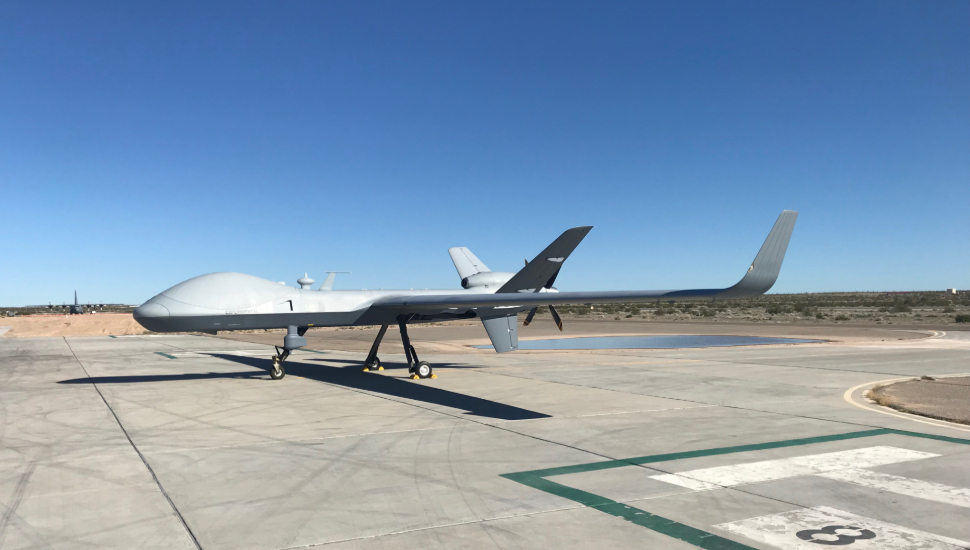Canberra has down selected the General Atomics Aeronautical Systems MQ-9B SkyGuardian for its AIR 7003 requirement for an armed remotely-piloted air system (RPAS), favouring the type over the MQ-9A Reaper.
Canberra has down selected the General Atomics Aeronautical Systems MQ-9B SkyGuardian for its AIR 7003 requirement for an armed remotely-piloted air system (RPAS), favouring the type over the MQ-9A Reaper.
Following the down select of the MQ-9B, a proposal for the acquisition will be put together for the government to consider in 2021-22, according to a statement by defence minister Linda Reynolds.
It is understood that Canberra will obtain 12-16 examples, offering the Royal Australian Air Force (RAAF) its first armed medium altitude, long endurance (MALE) UAV system. The programme is valued at A$1.3 billion ($880 million).
“Cutting-edge technology of this kind, with advanced sensors and systems, would complement advanced aircraft such as the [Lockheed Martin] F-35 Joint Strike Fighter and ensure that Australian Defence Force maintains state-of-the-art capability,” says Reynolds.

The General Atomics MQ-9B
Garrett Reim
She also called for local industry to participate in the project.
“Local companies that provide a range of innovative sensor, communication, manufacturing and life-cycle support capabilities will have the opportunity to showcase their capabilities throughout this development process,” she says.
The two General Atomics systems were originally shortlisted in November 2018, when they were selected over the Israel Aerospace Industries Heron TP.
While the MQ-9B SkyGuardian and MQ-9A Reaper offer similar capabilities, General Atomics says the MQ-9B was developed with cooperation from the US Federal Aviation Administration, and “will subsequently meet airworthiness certification standards domestically and around the world.”
The AIR 7003 requirement had its genesis in Australia’s defence whitepaper in 2016, which placed a strong emphasis on fixed wing intelligence, surveillance, and reconnaissance (ISR).
Among other requirements, it called for a MALE UAV capability to provide enhanced firepower and ISR support for a range of operations including counter-terrorism missions.
At the time of the MQ-9 selection in late 2018, the Royal Australian Air Force air vice-marshal Catherine Roberts said it would be a critical development.
“The MQ-9 is a catalyst to transform our support for our army and naval capabilities,” she said. “It will change the way that we conduct ISR and strike missions and overcomes one of airpower’s weaknesses – persistence.”
The MQ-9B follows another major UAV acquisition by Canberra for six Northrop Grumman MQ-4C Tritons under the AIR 7000 Phase 1B requirement. Announced in June 2018, the initial A$1.4 billion deal included one MQ-4C, as well as a A$200 million programme with the US Navy for development, production, and sustainment of the aircraft.
In March 2018, a follow-up deal was signed with Northrop Grumman for its second MQ-4C. The RAAF will take delivery of its first example in 2023.



















